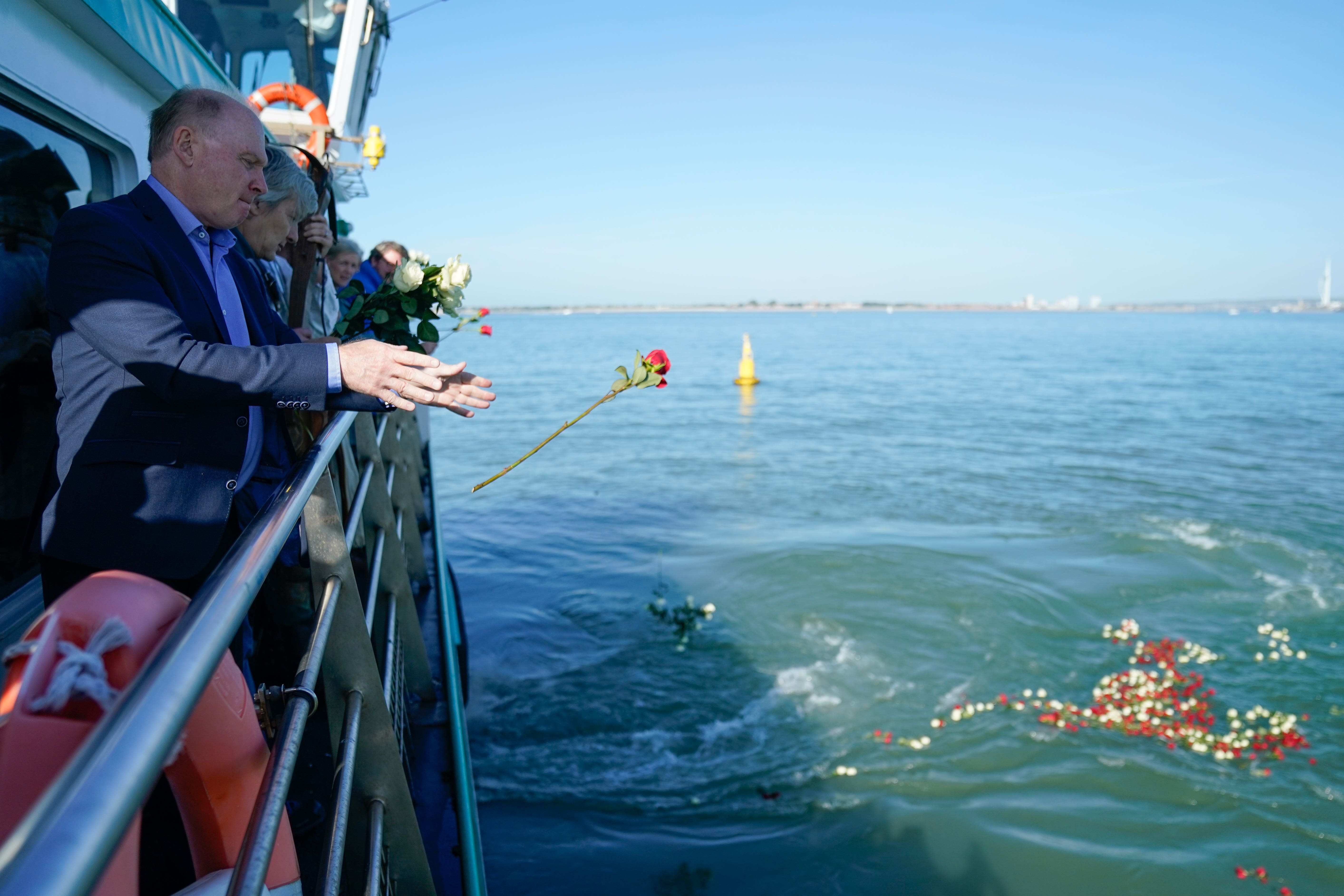Hundreds of roses scattered to mark anniversary of the raising of the Mary Rose
The Tudor warship had lain for 437 years on the bed of the Solent outside Portsmouth Harbour.

Hundreds of roses have been scattered at the wreck site of Henry VIII’s flagship Mary Rose to mark the 40th anniversary of it being raised from the seabed.
The Tudor warship had lain for 437 years on the bed of the Solent outside Portsmouth Harbour after it sank in 1545 while the king watched from Southsea Castle.
More than 500 divers, including King Charles III, were involved in the world’s largest underwater archaeological excavation, racking up more than 28,000 dives totalling 11.5 man-years on the seabed.
Recovered from the wreck site were more than 19,000 items from the ship, and the hull was raised live on television watched by an audience of 60 million worldwide.
To mark the anniversary of the raising on Tuesday, Dominic Jones, chief executive of the Mary Rose Trust, was joined on a small boat by guests and local schoolchildren to scatter 500 roses – representing the number of divers – at the spot where the hull was raised.
Mr Jones said: “We are beyond proud to be celebrating 40 years since the raising of the Mary Rose.
“The dedication and effort involved in this world-leading project is truly staggering, and we relish the opportunity to share our story and that of the hundreds of individuals involved with the internationally significant ship.
“Our work has opened a portal into Tudor life in a way that has never been seen before, and we are honoured to be able to tell the story of the 500 crew, some 465 who tragically lost their lives when the Mary Rose sank.”
The Mary Rose was Henry VIII’s favourite warship and sailed for 34 years before it sank on July 19 1545 during the Battle of the Solent against the French. The reason behind the sinking is disputed amongst experts.
The hull remains the only 16th-century warship on display anywhere in the world in its own dedicated museum at Portsmouth Historic Dockyard.
Dr Ann Coats, British maritime historian at the University of Portsmouth, said: “The Mary Rose excavations launched a new era of maritime archaeology: the sheer scale of the diving required hundreds of divers to be trained.
“Computer programmes were adapted to record the 19,000 objects recovered.
“Today, DNA, 3D printing and other scientific methods are unlocking even more information about the crew and artefacts.
“Forty years on, many more stories remain to be discovered.
“Mary Rose’s artefacts themselves gave fresh and amazing insight into Tudor life because organic materials – clothes, musical instruments, foodstuffs, cooking implements, rope, longbows and arrows – which do not normally survive in land sites had survived in abundance and could tell us so much about the lifestyle of ordinary people: seamen.
“Normally higher status objects have been preserved from wealthy people because of their intrinsic value, but not the everyday items of working life.
“This fantastic collaborative engineering event in 1982 allowed millions of people to experience the wonder of Mary Rose itself.
“Divers secured cables under the whole remaining hull so it could be pulled up from the silt and raised.
“People could now see the scale of the timbers, rope cables, cooking oven, guns, could smell the tarred rope.
“Individual crew members could be assembled, and their jobs identified, such as the archer.”
Bookmark popover
Removed from bookmarks